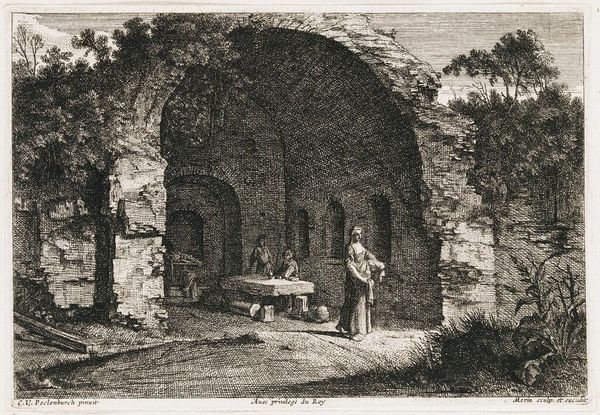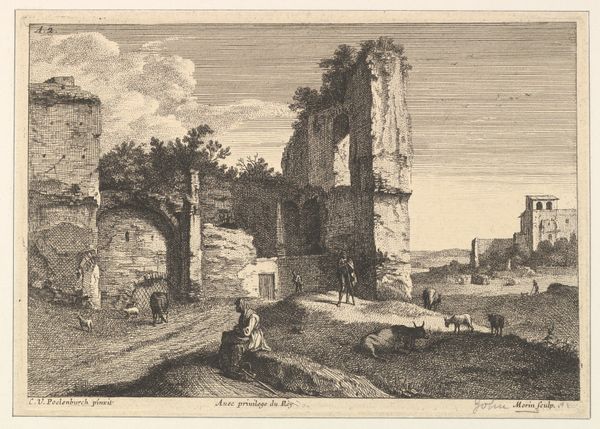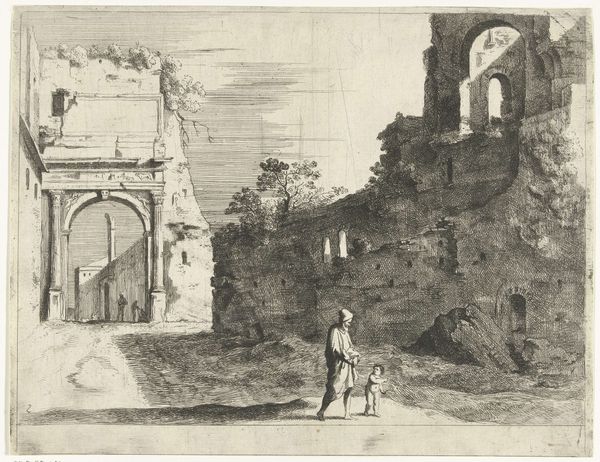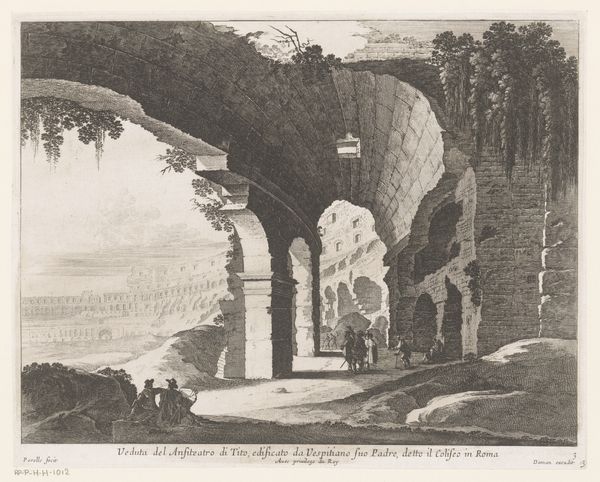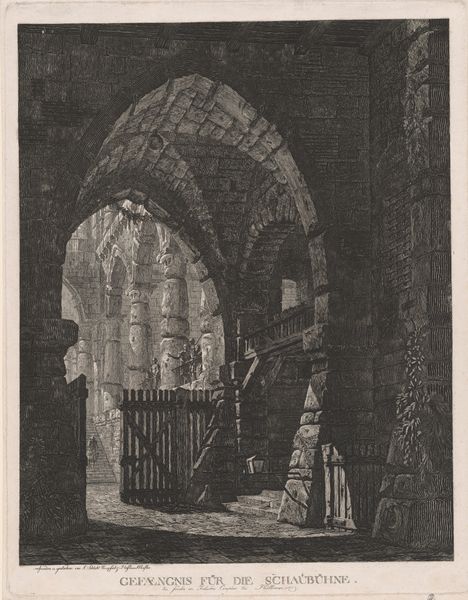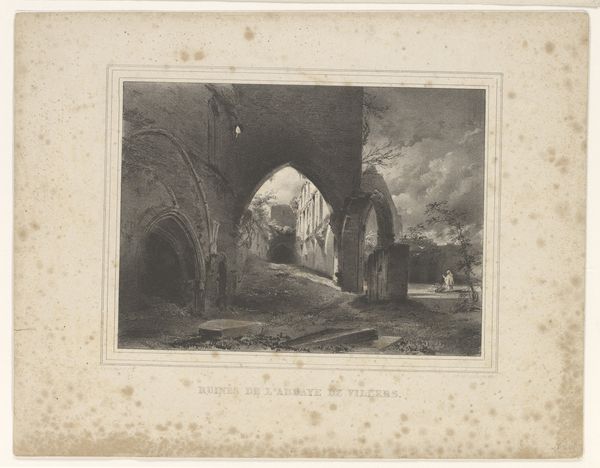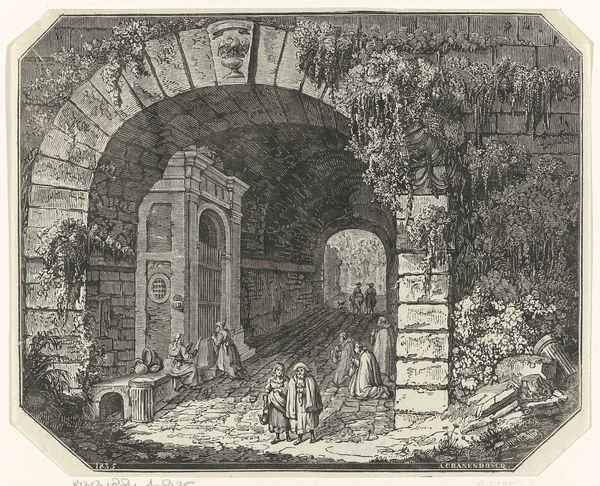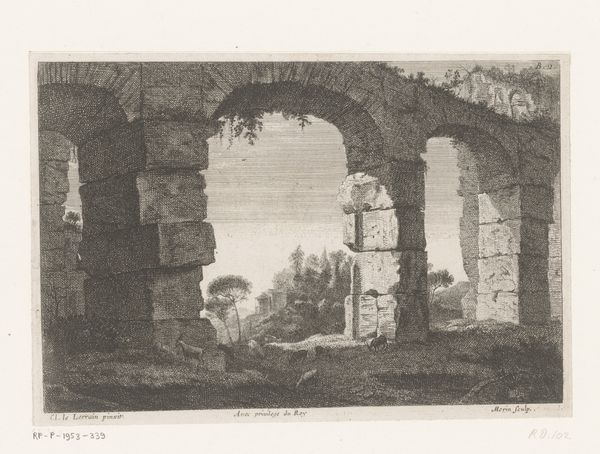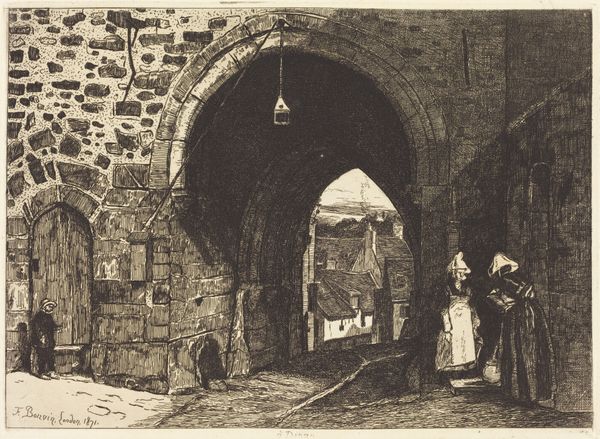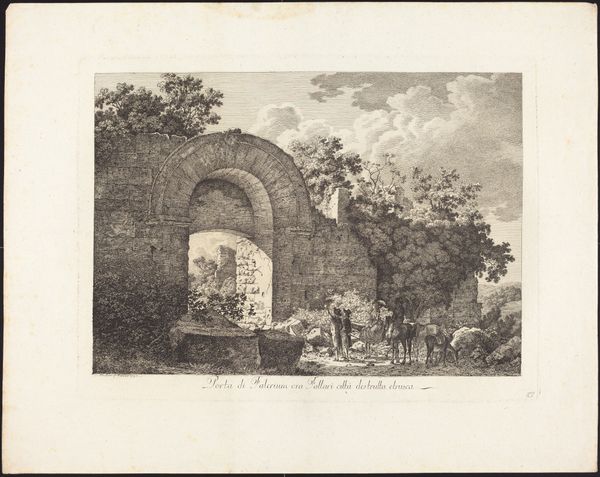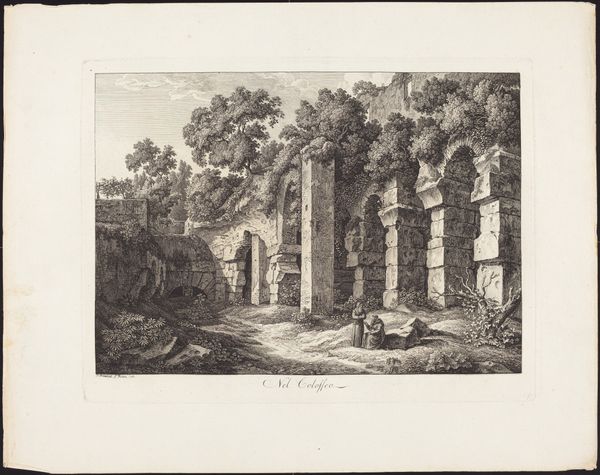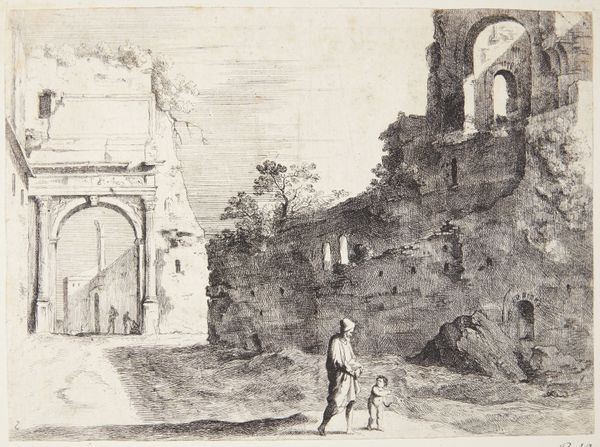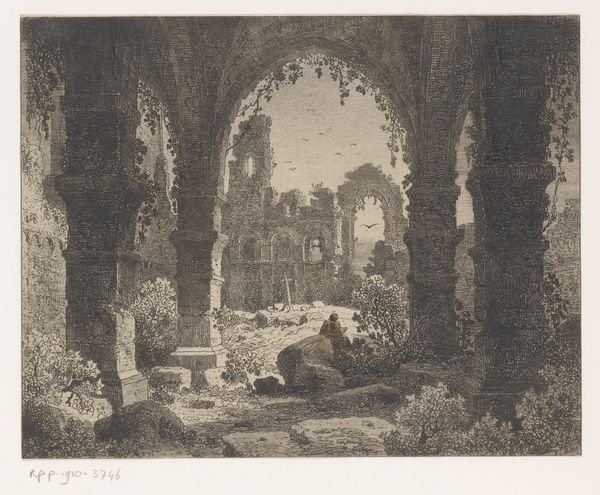
drawing, etching, engraving
#
drawing
#
baroque
#
etching
#
landscape
#
history-painting
#
engraving
Dimensions: image: 5 11/16 x 8 5/16 in. (14.4 x 21.1 cm)
Copyright: Public Domain
Curator: Here we have "La Caffarella," sometimes known as "Grotte d'Egerie," an etching and engraving crafted sometime between 1620 and 1650 by Jean Morin, now housed at the Metropolitan Museum of Art. Editor: It’s immediately striking how the solid, ruined architecture contrasts with the delicate etching lines depicting the foliage. There’s a real push and pull between decay and life, dark and light. Curator: Exactly. The crumbling structure itself would have had significant cultural cache at the time. Sites like the Caffarella were being rediscovered and re-evaluated by antiquarians, becoming linked to an imagined golden age. These images fed into that rediscovery. Editor: Visually, I'm drawn to the textures created through hatching and cross-hatching. It’s incredibly effective at defining form, giving volume to the ruins and the figures. See how the direction of the lines suggests the rounded archways and the folds in the clothing? Curator: Yes, and note how the seemingly casual figures placed within the scene transform the image. Are they merely staffage—added simply to indicate scale—or are they meant to subtly invoke classical narratives related to the location? The deliberate ambiguity opens questions about the purpose of the piece, it isn't purely topographic. Editor: The composition certainly encourages that reading. The placement of the female figure, contrasted against the darker interior space where two male figures are positioned, almost creates a focal point and suggests a narrative dynamic. There’s something theatrical about it. Curator: That sense of theater wasn't accidental. Images like this were part of a broader cultural landscape of the period, influencing understandings of the classical world, not just through archaeological finds, but also performance and staged interpretations of history. Editor: Examining the etching so closely, I begin to see how the medium itself contributes to the themes—the detailed lines providing a sense of both historical distance and an intimate viewing experience, as if one were tracing the outlines of memory itself. Curator: Absolutely. It really captures how art both shapes and reflects society’s perception of its past, creating dialogues across centuries. Editor: I agree. The longer you look, the more complex the story this seemingly simple etching tells.
Comments
No comments
Be the first to comment and join the conversation on the ultimate creative platform.
